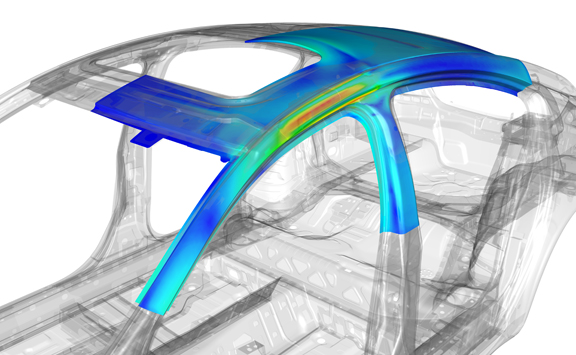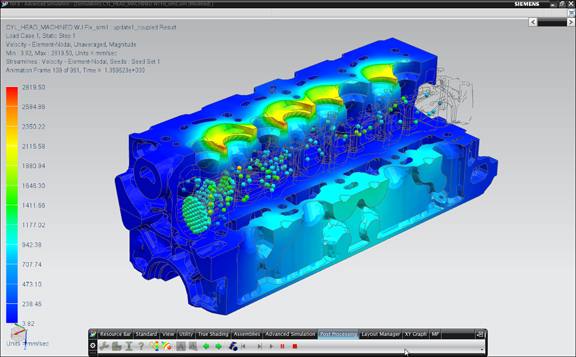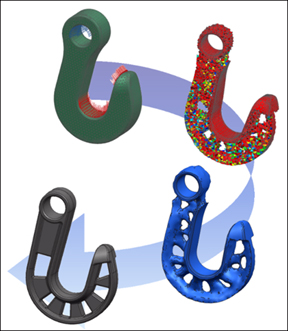October 27, 2011
Siemens PLM Software‘s flagship CAD package NX is now returning, with a strong emphasis on simulation. According to the company’s announcement, NX 8 comes with “over 200 simulation-specific projects.”
Jim Rusk, Siemens PLM Software’s VP of product engineering software, said, “Our unsurpassed CAE (computer-aided engineering) solution has been further expanded to better enable users to identify and eliminate issues in the virtual world before they become problems in the real world.”
The lineup of CAE functions in NX 8 include:
- a de-featuring toolset to suppress holes;
- the option to reuse legacy mesh models;
- the ability to define superelements within large FEA assemblies;
- three dimensional fluid domain extraction;
- topology optimization;
- code-coupling for thermal-mechanical simulation; and
- support for distributed computing in NX Flow solver.
NX 8’s topology optimization reflects a trend among engineers to perform simulation earlier in the design process. Previously, because of cost concerns and limitations in CPU horsepower, the use of simulation was restricted to later stages in the design cycle, mainly to verify assumptions about a design’s structural integrity and performance—something Siemens PLM Software calls “a reactive approach to design optimization.”
This practice, the company points out, “often only results in small variations of the current design.” With NX 8, the company hopes to promote “proactive design optimization” by way of upfront topology optimization. According to the press announcement, “Topology optimization analyzes a component’s package space with environmental loads and constraints applied to it. Through an iterative process, the solver determines an initial optimum design, which could be a completely new, unintuitive concept. The resulting raw, optimum design can then seamlessly be delivered to the designer in NX for further refinement.”
NX Flow’s support for distributed parallel processing, the company states, will results in “a dramatic speed-up in the solution of complex fluid flow problems.” Simulation software is seen as an ideal candidate for distributed or parallel processing, made possible by multicore CPUs and GPUs, because simulation solvers generally put a heavy demand on processor units. By reworking the code to support parallel processing, simulation software suppliers like Siemens PLM Software can let customers take full advantage of the latest generation of multicore hardware.
NX Flow’s support for distributed computing is currently limited to CPU clusters only. Ravi Shankar, Siemens PLM Software’s director of global marketing for simulation software products, pointed out, “We do support GPUs for view factor calculation for radiation problems,” but had no information on when GPU support will be available for flow and thermal behavior calculations.
To explain licensing for parallel processing, Shankar said, “We allow the use of up to eight cores on a single CPU without additional charge with our Advanced Flow products; please note that this is not available with our base product e.g., NX Flow. For customers looking to leverage more cores or multiple CPUs, we offer an add-on module that removes any software limitations on the number of CPUs and allows support for clusters/machines over networks.”
For more, watch the video clip below from Siemens PLM Software.
Subscribe to our FREE magazine, FREE email newsletters or both!
About the Author
Kenneth Wong is Digital Engineering’s resident blogger and senior editor. Email him at [email protected] or share your thoughts on this article at digitaleng.news/facebook.
Follow DERelated Topics









